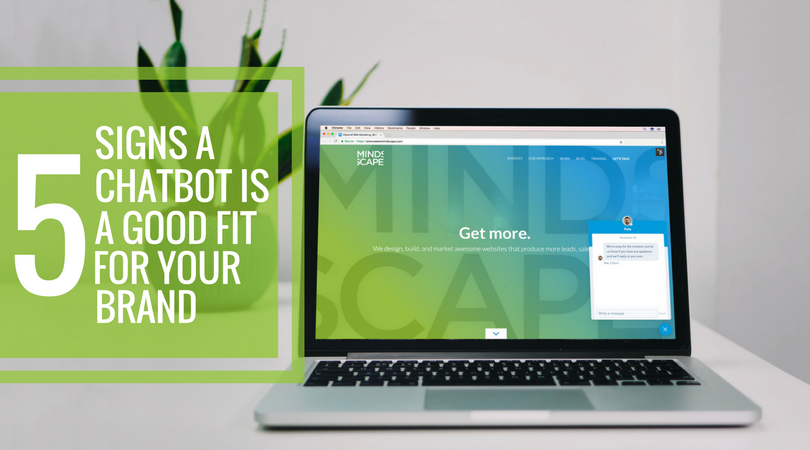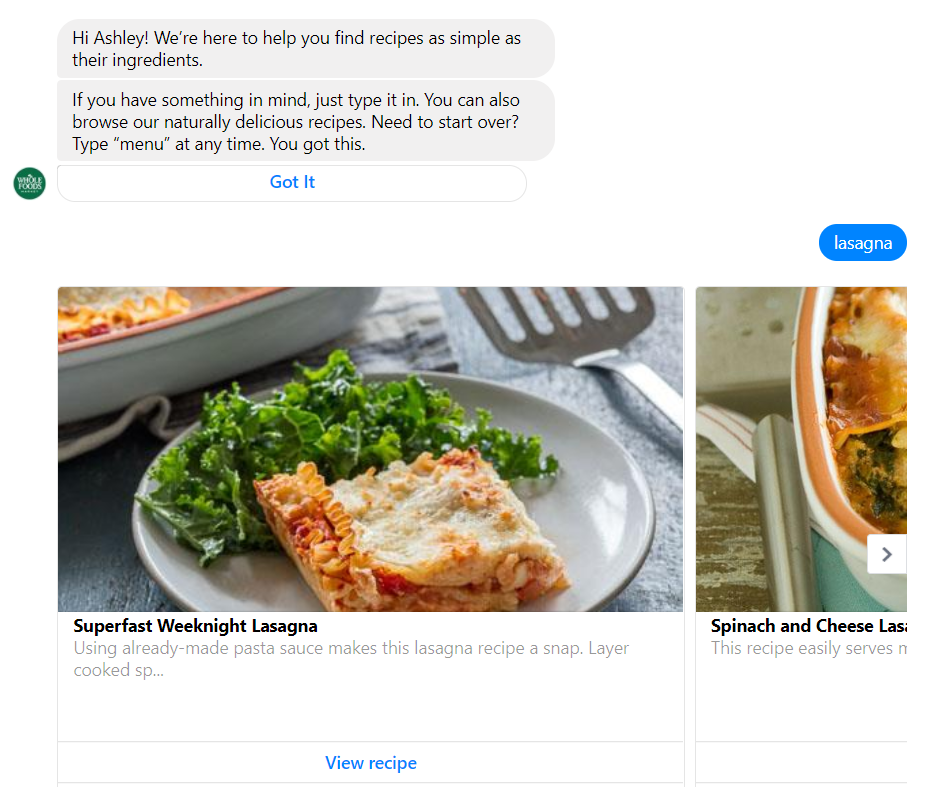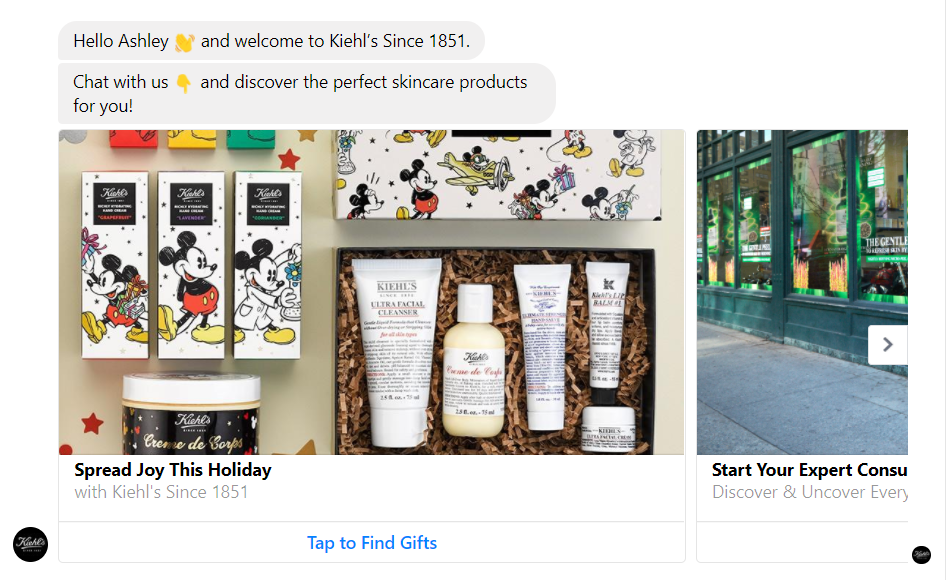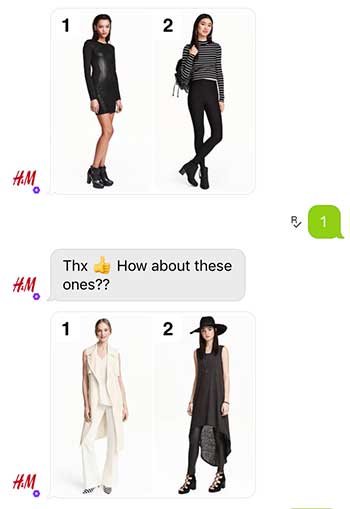
If you’ve spent any time browsing the web in the last few years, you’ve probably encountered a chatbot. It popped up in the bottom corner of your screen and asked if there was anything that you needed help with. But that’s a very basic chatbot and in recent years they have come a long way. Now they are capable of making recommendations, qualifying leads and engaging visitors. But I’m getting ahead of myself. First, take a step back and talk about what a exactly a chatbot is.
What is a chatbot?
Chatbots are computer programs that mimic real conversations using a combination of programming logic and artificial intelligence. The bots helps the user via a text-based instant messenger that can either be embedded on your site or through 3rd party a messaging platform (like Facebook Messenger or Slack). The bot understands some or all of what the user is saying, and then responds to them with pre-programmed information or options for action (like a link to visit a specific website page).
Sounds pretty cool, right? It certainly is! And if you have an online presence, there’s a pretty good chance that using chatbots in some capacity can be quite beneficial for your organization. Here are a few signs that chatbots might be a good fit for you ….
1. You have some type of e-commerce functionality on your website.
Whether you are a small business selling small batch, artisan chocolates or a large OEM part manufacturer selling thousands of items per day, chatbots can help improve the experience that customers have while shopping on your site.
Chatbots can be your online salesperson. They can provide knowledgeable assistance to shoppers and helping them finding the right products for them. The bot can be programmed to direct shoppers to specific product pages, provide additional product details, and even make product recommendations.
2. You get the same customer questions on a regular basis.
Depending on the complexity of the platform hosting your chatbot, it can have 100+ pre-programmed responses. This is great for answering those frequently asked questions that require a fairly generic and straightforward answer including:
- Business policies – deliveries, returns, loyalty programs, locations, operational hours, etc.
- Products and services – pricing, product details, product troubleshooting, etc.
- Website navigation – links to specific pages, contact information, etc.
A chatbot can provide your current and potential customers with valuable information and answer their questions without a lot of effort on their part (or yours).
3. You have a small sales team.
Using a chatbot on your website can be helpful if your business offers a product or service that has a longer sales cycle and requires that (at some point in their buying journey) customers have to actually talk to a real-life person at your organization.
Through the conversations that it has with your customers, the bot can help qualify sales leads. After qualifying a prospect, the bot can forward it to your sales team for follow up. No more wasting time chasing after those unqualified leads.
4. You have customers who regularly contact you outside of regular business hours.
Do you have customers who are located in different times zones than you are? Or perhaps you have customers who contact you outside of normal business hours with urgent questions that require immediate answers (ie: tech support or product troubleshooting). Chatbots can help! Since they work 24 hours a day, 7 days a week, 365 days a year; chat bots can be there to help your customers even when you can’t be.
However, chatbots do have their limitations and might not be able to answer every single question. But if customers do have an issue that can’t be solved by the bot, they can leave their contact information, and processes can be put in place to notify your team that they need to contact the person first thing when business hours resume the next day.
5. You want a new way to keep your customers engaged with your brand.
Chatbots can be an exciting new way to change up the way that you engage with your customers (and how they engage with you). They make it more of a 2 sided interaction.
If you want to start a conversation with site visitors, you can dispatch a chatbot to get the ball rolling. The bot can help you cross-sell products, introduce customers to a new product, or help get reviews for an existing product. Having awesome engagement with your customers can help differentiate you from your competitors, and ultimately lead them to choose you.
Need some inspiration?
Take a look at these brands who are doing chatbots well, whether it’s using Facebook Messenger or the bots are integrated on their own website.
Whole Foods –
Whole Foods’ Facebook Messenger bot lets you search for recipes, products, and food inspiration; providing a new way to interact with the brand.

Kiehl’s –
The beauty brand launched its first bot on Facebook Messenger. The “Virtual Kiehl’s Customer Representative” offers access to customer service, recommendations and searches organized by product type, skin concerns, and more. From there, you can go to the product detail page and purchase the item on the spot.

.
H&M –
Everyone’s favorite Scandinavian clothing retailer has an awesome chatbot on their website. They use a Kik bot as a fashion quiz that helps you hone in on the perfect pieces for you. The chatbot asks a few questions about your style by presenting two photos and asking you to simply pick “1” or “2.” This provides a personalized shopping experience and gives the illusion that you have a personal stylist at your fingertips.

As you can see, chatbots can do so much more for your business than simply ask visitors if they need help finding information, they can be used as a part of your overall marketing and sales strategies.
Like what you’ve read?
If you’ve enjoyed this blog post and would like to receive more information on, website development, content creation and everything digital marketing from MINDSCAPE, click below and subscribe to our blog! You’ll receive an email each time we publish a blog post.




